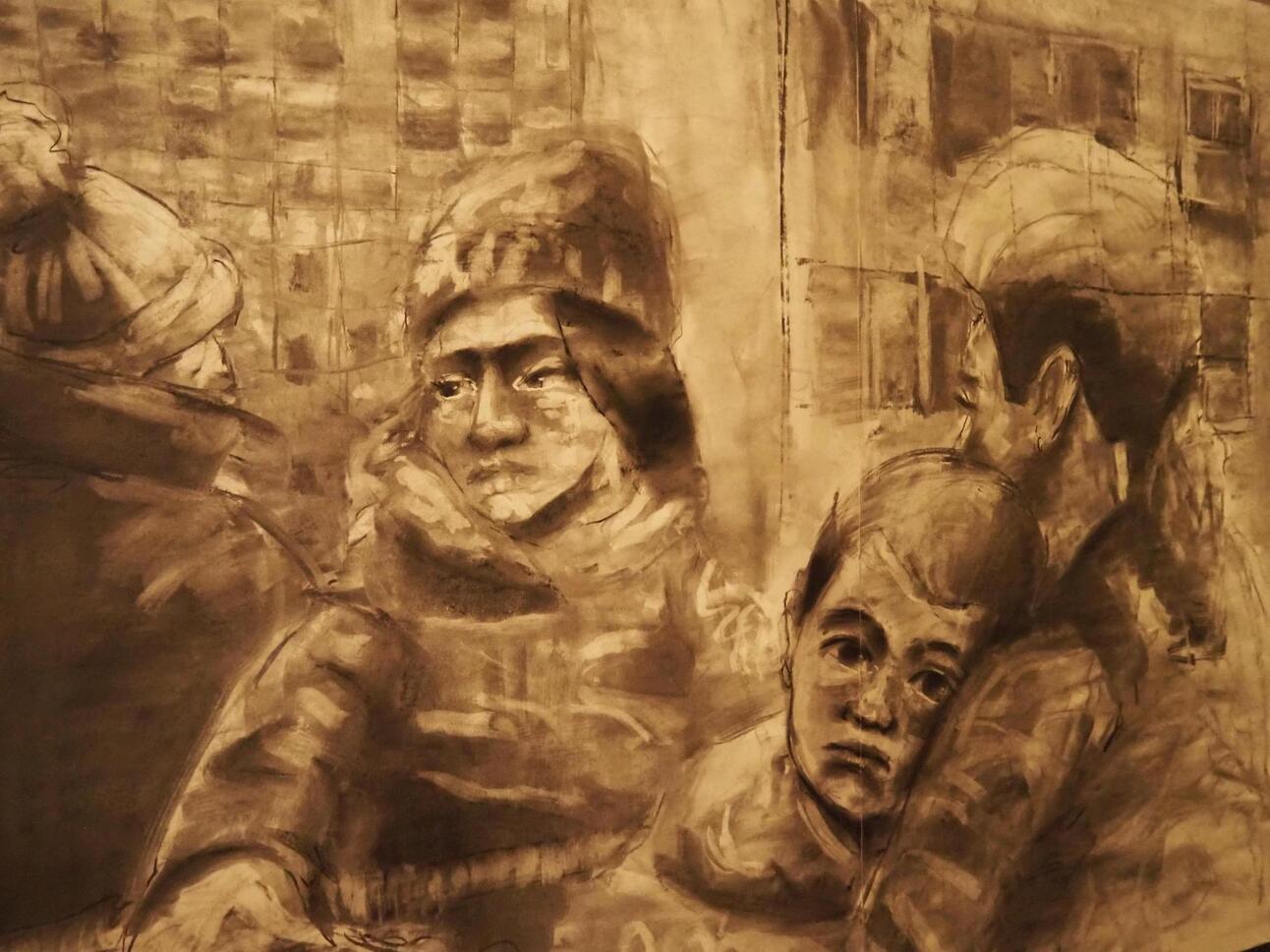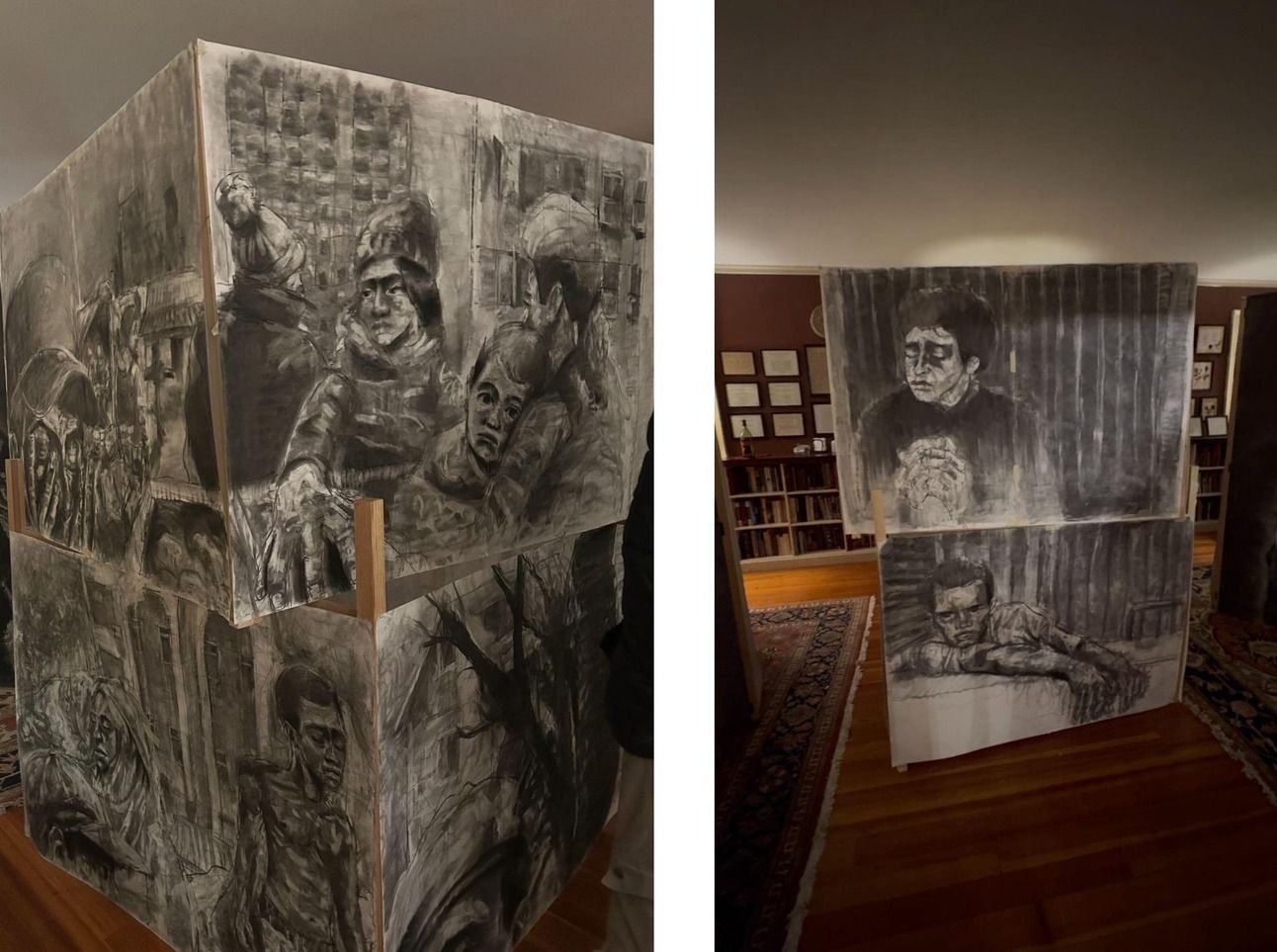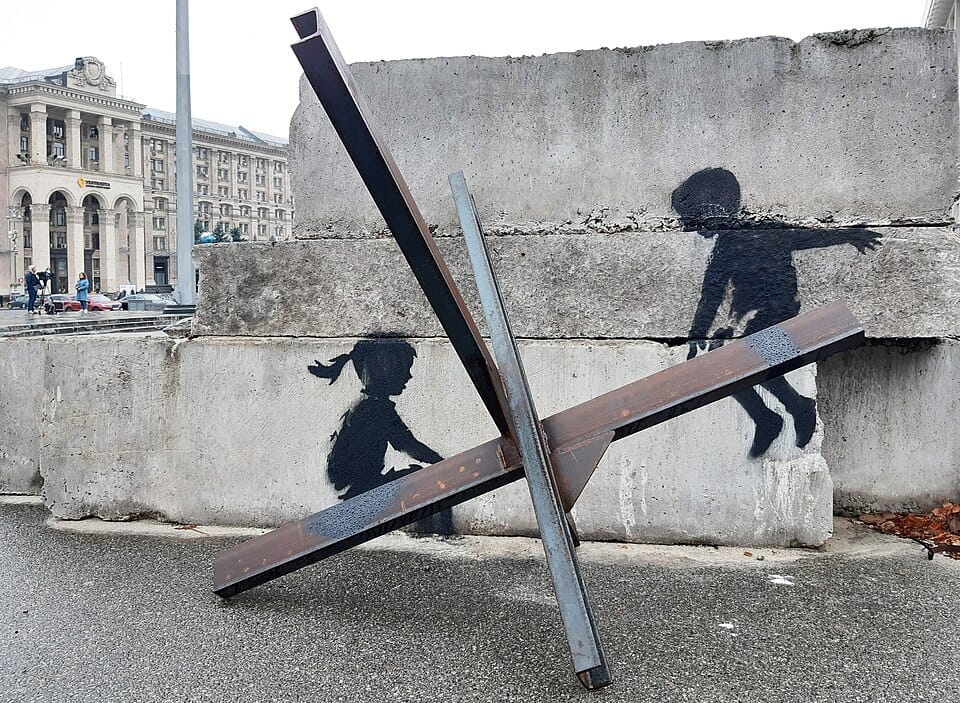- Stratagem
- Posts
- 🌊Deep Dive Weekly Edition #9🌊
🌊Deep Dive Weekly Edition #9🌊
📬Arts Week Edition! Ukraine’s Conflict and the Artistic Lens🌍

📚The TL;DR📝
Ukraine: 35.66 million people, GDP of $560.11 billion (2023), neighbors Russia to the northeast, Belarus to the north, Poland, Slovakia and Hungary to the west, and Moldova and Romania to the southwest. President Volodymyr Zelensky has ruled since 2019
The conflict in Ukraine began in 2014 with Russia’s annexation of Crimea and escalated in February 2022 when Russia launched a full-scale invasion, leading to widespread destruction and displacement.
Ukraine’s economy has shown resilience, with a 5.32% GDP growth in 2023, following a significant contraction in 2022, supported by international aid, a stable currency, and establishment of a maritime corridor to continue grain exports, despite Russia’s attacks.
Art is a key medium for documenting the Russia-Ukraine War’s human cost, with exhibitions from Ukrainian artist Nyekit and Banksy’s murals offering powerful visual advocacy that reflects themes of displacement, memory, and trauma.
Nyekit’s and Banksy’s works transcend art for art’s sake, becoming integral to international dialogues on conflict, using visual storytelling to foster global empathy and call for peace amidst the ongoing crisis.

A Failed Essay (Nyekit, 2025)
📌Drawing the Line: Ukraine’s Conflict and the Artistic Lens📌
Amid the ongoing war in Ukraine, art has emerged as a powerful force that documents the chaos and advocates for global awareness and solidarity. This trend is best exemplified by the works of Ukrainian artist Nikita Ivaniuta, under the artist name Nyekit, and notorious UK street artist Banksy. Their works demonstrate how art transcends aesthetic beauty and becomes a tool for resistance and truth. In the wake of Russia’s annexation of Crimea in 2014, Ukraine has fought on the battlefield and through art. Over the past 11 years, artists have acted as chroniclers of Ukraine’s suffering and advocates for Ukraine’s resistance.
🎨Art as a Personal and Global Lens on War🪖
Nyekit is a Ukrainian student and artist whose work transcends the traditional boundaries of visual art, offering a raw and emotional response to the horrors of war. Born and raised in Ukraine, his art is deeply informed by his personal experiences and the cultural landscape of his homeland. Nyekit’s work blends academic analysis with emotional depth, making his exhibitions not only an exploration of personal trauma but also a powerful form of art as advocacy. His exhibitions offer a poignant look into the devastation faced by Ukrainians by focusing on the impact of war on memory and displacement.
In his most recent exhibition “A Failed Essay”, Nyekit juxtaposes the war in Ukraine with the conflict in Sudan, using this contrast to explore themes of cultural erasure, survival, and emotional distance. What began as an academic essay evolved into a deeply personal reflection - one in which Nyekit admits his emotional ties to Ukraine shaped the tone and style of the work. In the artist’s statement accompanying the show, he reflects on An Introduction to the Unknown with the following words: “A closed box. A fragmented prelude - two conflicts, two perspectives. The gaze shifts. The Ukraine war stands eye level, sharp in recollections for me. But the other remains distant, the war in Sudan. Cracks in the surface offer glimpses - sketches, emotions, the frailty of construction and the beauty of failure.” The quote captures the essence of the exhibition: a meditation on proximity, perception, and the struggle to authentically portray the Sudanese war not personally lived.
Another striking work in the exhibition centers on hands as vessels of memory and work. The pieces reflect the often-overlooked physical and emotional toll of navigating bureaucracy as a displaced person. Weathered palms and trembling fingers are portraits in their own right, each line etched with stories of labor, loss, and longing. Nyekit draws from a vivid memory of waiting in line for documents in a foreign land, observing the quiet exhaustion and shared desperation in the hands of those around him. Through this work, he shifts the focus from wartime spectacle to bureaucratic subtlety, asking viewers to see what is often unseen: the slow, repetitive trauma of seeking legitimacy in a system that questions one’s very existence. It is an intentional focus elevating the ordinary into something sacred, painful, and deeply human.

An Introduction to The Unknown (Nyekit)
🏙️Among the Rubble💥
Banksy quietly erects street art, creating provocative commentary on societal issues. His works in Ukraine blend into the rubble of war-torn cities, transforming the debris into canvases of resilience, defiance, and tenderness. Banksy’s spray-painted figures have become famous worldwide because of their bold, moral statements. Banksy’s pieces in war-torn cities suggest that despite Russia’s aggression, art and joy still survive in Ukraine. Fans of Banksy and supporters of Ukraine shared the images across social media, making them symbols of Ukraine’s resistance. The pieces started a global conversation on war, peace, and solidarity. In a time when destruction dominates the visual landscape, Banksy’s murals offer moments of quiet reflection and emotional contrast. They remind viewers that art can be a form of survival - bearing witness, offering hope, and reclaiming space in the midst of ruin.

Children of War (Banksy, 2022)
Two of Banksy’s murals stand out for their emotional clarity. In Children of War, two children are stenciled on a concrete slab, playing on a metal tank trap as if it were a seesaw; the image juxtaposes innocence with instruments of war. In Banksy Irpin, a young gymnast performs a handstand on rubble offering a quiet symbol of balance amid devastation.
Much like Nyekit’s exhibitions, Banksy’s murals are a call to action. Both artists use visual testimony to transcend borders and create a dialogue on the human costs of conflict. While Nyekit’s works reflect on personal trauma and the experiences of displacement, Banksy reminds viewers that the war is fought both on battlefields and in the hearts and minds of people.
🖼️Art as Advocacy📣
Art is more than an aesthetic pursuit. It is a powerful tool for documenting human suffering, especially in times of conflict. Art is a vital form of resistance and reflection in the wake of both physical and psychological destruction. The Russo-Ukrainian War has torn through landscapes and lives alike, leaving behind echoes of absence, grief, and resilience.
Ukrainian artists and their international allies have carried the stories of war from the rubble of their cities to galleries around the world turning art into a living witness to the conflict. Contemporary art is pushing back against the tradition of war time propaganda art by creating space for truth, memory, and justice to take root. Murals and installations stand as markers of history, with each brushstroke and charcoal sketch telling stories of those who have been lost, displaced, or broken by war. Art challenges those who view it to move beyond passive observation, urging the international community to confront the enduring scars of war and to take meaningful action in the face of human suffering.
Not a subscriber? Click here to subscribe!
See You Next Tuesday For 🌎The Beyond Borders Brief!🌎
This week’s newsletter brought to you by the Deep Dive staff. Connect with us on social media to pose questions, comments, or feedback. Click here to learn more about TSI.
Reply